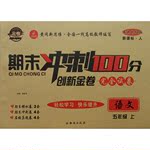题目内容
1.The Puritans (新教徒) get a bad reputation in America-especially when it comes to alcohol.Mayflower,the first ship that came over from England to Massachusetts Bay,actually carried more beer than water.In fact the Founding Fathers of America liked a drink-Samuel Adams was a partner in his father brewery,and Thomas Jefferson was famous for importing European wines.
Early Americans took a healthful small drink for breakfast,whiskey was a typical lunchtime drinks ale (麦芽酒) accompanied supper and the day ended with another drink called nightcap.Most Americans in 1790consumed an average of 5.8gallons of pure alcohol a year.In 1830,consumption reached 7.1gallons a year and alcoholism was starting to have a serious influence on communities.Women and children might be in physical danger if the man of the house began drinking.If he became ill or lost his job through drinking,there was no social safety net to support or protect his family.Eventually,alcoholism was being treated as a disease.
By the late 19th Century,support for Prohibition,banning the manufacture and sale of alcohol,was powerful.The first arrest for driving under the influence of alcohol was in 1897.On 16January 1919,Prohibition was set into law.However,by the 1930s when American economy was experiencing a hard time it was widely believed that making alcohol legal again would provide badly-needed jobs and taxes.So in February of 1933,Prohibition was ended.Still,Prohibition had a great influence on alcohol drinking in this country.In 1955,Americans drank an average of 2.3gallons of pure alcohol a year.The Prohibition movement was still quite strong after Prohibition ended and it led to a lot of local prohibition on alcohol.
The American presidency has done a lot to rehabilitate alcohol and make it respectable again.Presidents Richard Nixon,Jimmy Carter,Bill Clinton,Ronald Reagan and Barack Obama can all be seen on film drinking socially and making official toasts with international celebrities.
32.Which is TRUE about the Puritans according to the passage?C
A.Their ancestors came to America to sell alcohol.
B.They founded the breweries in European countries.
C.They had a habit of alcohol drinking.
D.They were the major importer of alcohol.
33.In what way was an alcoholic's family affected by alcoholism?B
A.His family couldn't afford the drink.
B.His family might suffer financially.
C.His wife and children might become ill.
D.His family might not be treated equally.
34.What can be learned about Prohibition in America?B
A.It came into law in the 19th century.
B.It discouraged alcohol drinking.
C.Its effect disappeared after its removal.
D.It failed to forbid drunk driving.
35.The passage mainly talks aboutA.
A.the brief history of alcohol drinking in America
B.American presidents'affection for alcohol drinking
C.the Puritans'bad reputation in America
D.the reasons why Prohibition came into law.
分析 文章讲述了美国的饮酒史,分别写了早期美国人的饮酒习惯,颁布禁酒令的原因以及恢复饮酒让官方祝酒.详细的描述了酒精的历史.
解答 CBBA32.C 根据第一段"The Puritans (新教徒) get a bad reputation in America-especially when it comes to alcohol."他们因为酒精得到了坏名声,可知他们有饮酒的习惯,故选C.
33.B 根据第三段中的"If he became ill or lost his job through drinking,there was no social safety net to support or protect his family.Eventually,alcoholism was being treated as a disease."如果他们因为喝酒生病或失业,没有社会保障保护他的家庭可知他的家庭可能遭受经济上的挫折,故选B.
34.B 根据第四段中的"By the late 19th Century,support for Prohibition,banning the manufacture and sale of alcohol,was powerful"中至此禁酒令可知,它不饮酒,故选A.
35.A 第三段讲述了早期的美国人的饮酒习惯,第四段讲述了美国的颁布了禁酒令,第五段讲述了恢复了饮酒.所以是文章通过讲述美国的饮酒史来写作的.
点评 做阅读时经常犯错的主要原因是,仅凭读过文章后残留在脑海中的一丝印象来勾选答案,这样便很容易掉入出题人故意设布下的题目陷阱.所谓阅读理解,对于题目的理解一定要忠实于原文,因此,每一道题都应该与原文作全面的对比与核查,再得出答案.也就是说,阅读理解的每一道题目,在原文都应该有明确的出处,我们把这一出处叫做原文相关句,(1)排除与原文相关句主题不一致的选项(2)排除与原文相关句态度相反的选项 (3)排除用于过于极端或负面的选项(4)注意结合文章主旨和主题去排除.

 期末冲刺100分创新金卷完全试卷系列答案
期末冲刺100分创新金卷完全试卷系列答案| A. | need | B. | can | C. | must | D. | would |
| A. | in terms of | B. | in case of | C. | as a result of | D. | in face of |
| A. | everything | B. | anything | C. | nothing | D. | something |
-Well,I won't join you unless Wang Lin too.( )
| A. | will be asked | B. | is asked | C. | asked | D. | be asked |
| A. | and | B. | but | C. | so | D. | or |